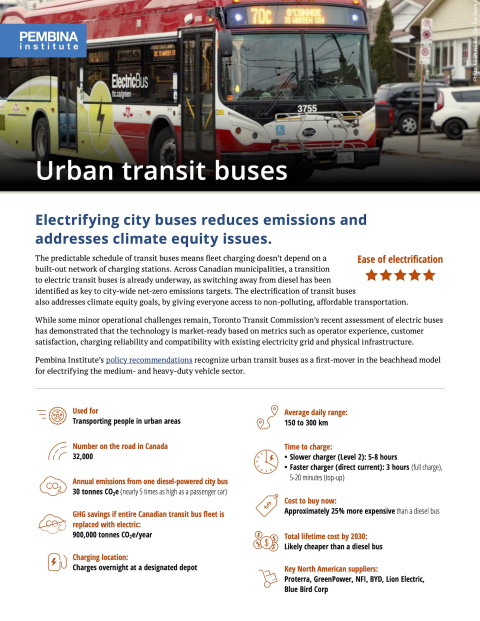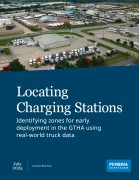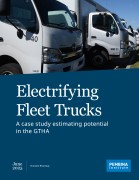Transportation is the second biggest source of greenhouse gas emissions after the oil and gas sector in Canada. While the federal government is currently focused on policies to hasten the transition to electric passenger cars, buses and trucks must also be electrified. These bigger vehicles make up 35% of the overall emissions generated by the transportation sector. Switching to zero-emitting trucks and buses will significantly reduce emissions, improve air quality, and free businesses from the financial instability of volatile fuel prices.
This series of fact sheets provides an overview of the carbon footprint of five categories of medium- and heavy-duty vehicles (MHDVs), the challenges of switching to a zero-emission model in each category, and the key policies needed to successfully transition to affordable, climate-friendly means of transporting goods and people.
To learn more about how to advance zero-emission MHDVs, see our policy analysis and recommendations at our Strategy for Zero-emission Medium- and Heavy-Duty Vehicles page.








